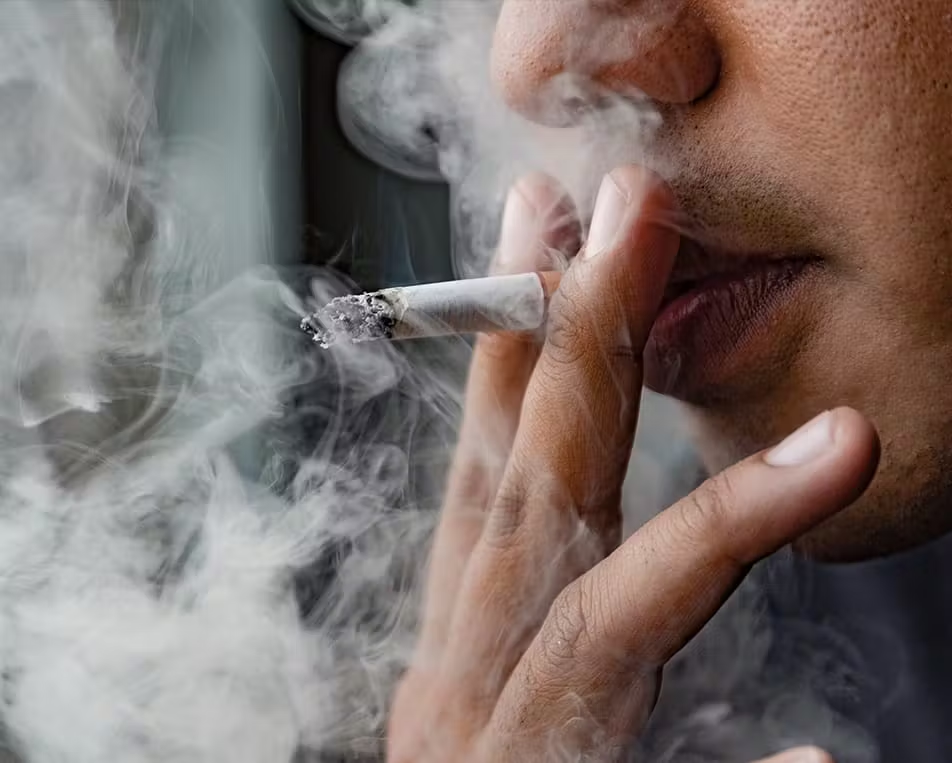Smoking has long been recognized as a deadly habit with a trail of well-documented health consequences.
Yet, amidst the focus on smokers themselves, an often-overlooked victim of this addiction emerges: the non-smoker.
Every breath of secondhand smoke inhaled by an unsuspecting bystander brings with it a cocktail of toxins, many of which are more harmful to them than to the smoker.
While smokers make a choice, the damage suffered by non-smokers is a silent tragedy.
In this article, we will explore the dangers of secondhand smoke, examine scientific evidence, and underscore why the health risks to non-smokers are not only real but also, in many cases, more severe.
What Is Secondhand Smoke?
Secondhand smoke, also known as environmental tobacco smoke (ETS), is a combination of two forms: mainstream smoke, which is the smoke exhaled by a smoker, and sidestream smoke, which is the smoke emitted from the smoldering end of a cigarette, cigar, or pipe.
Sidestream smoke is hazardous because it contains higher concentrations of cancer-causing substances and is released at lower temperatures, allowing harmful chemicals to remain intact longer.

The Composition of Secondhand Smoke: A Toxic Brew
According to the U.S. Centers for Disease Control and Prevention (CDC), secondhand smoke contains more than 7,000 chemicals. At least 70 are known carcinogens, and hundreds are toxic.
Notable chemicals include formaldehyde, which is used to embalm dead bodies; benzene, a chemical found in gasoline; ammonia, a common household cleaner; arsenic, which is used in rat poison; hydrogen cyanide, found in chemical weapons; and carbon monoxide, which interferes with the body’s ability to deliver oxygen.
While a smoker filters some of these chemicals through the cigarette and their lungs, a non-smoker breathes in the full, unfiltered dose.
How Secondhand Smoke Affects Non-Smokers
Secondhand smoke has immediate and long-term effects on people exposed to it, regardless of age or health condition. Children are particularly vulnerable due to their developing lungs and immune systems.
Exposure to secondhand smoke has been linked to sudden infant death syndrome (SIDS), increased asthma attacks and respiratory infections, slowed lung development, ear infections, and behavioral and cognitive problems.
Pregnant women and their unborn babies are also at great risk. Exposure during pregnancy can cause low birth weight, premature birth, developmental issues, and an increased risk of miscarriage. Adults exposed to secondhand smoke face a 25–30% increased risk of heart disease, a 20–30% increased risk of lung cancer, worsened asthma and other respiratory conditions, and a higher risk of stroke. According to the World Health Organization (WHO), secondhand smoke kills approximately 1.2 million non-smokers globally each year.
Why Secondhand Smoke Can Be More Harmful Than Firsthand Smoke
You might wonder: how can smoke be more dangerous to the bystander than the person actively smoking?
One reason is that non-smokers have no filter protection. Smokers inhale through a filter that reduces some of the toxic content, but non-smokers inhale smoke directly from the environment.
Another reason is involuntary exposure. Non-smokers don’t choose to inhale toxins. Continuous, unintentional exposure—especially in enclosed areas—can result in cumulative damage. Lastly, sidestream smoke’s toxicity is significantly higher. It contains greater concentrations of carcinogens than the mainstream smoke inhaled by the smoker.
Case Studies and Real-Life Examples
A 2020 study published in the International Journal of Environmental Research and Public Health found that children living in households with smokers had significantly higher rates of respiratory illnesses, even when smokers only smoked outdoors.
In countries with strict indoor smoking bans, such as Ireland and Uruguay, hospitalization rates for heart attacks and asthma dropped significantly after the bans took effect.
Myths About Secondhand Smoke
There are many myths surrounding secondhand smoke. One such myth is, “If I smoke in another room, they’re safe.”
The fact is that smoke particles linger and can travel between rooms through vents, doors, and windows. Another myth is, “Air fresheners or open windows eliminate the risk.”
In reality, air fresheners only mask the smell. The toxic particles remain suspended in the air and cling to surfaces. A final myth is, “Smoking outside eliminates secondhand smoke.” While better than indoor smoking, smoke can still drift indoors or hover around the smoker, affecting those nearby.
The Economic Cost of Secondhand Smoke Exposure
The harm caused by secondhand smoke isn’t just medical—it’s also economic. It leads to increased healthcare costs from treating smoke-related illnesses in non-smokers, especially children.
There are also productivity losses from missed workdays due to illness and higher insurance premiums for individuals living with smokers. Globally, the economic cost of smoking, including secondhand smoke, is estimated at over $1.4 trillion annually.
How to Protect Yourself and Your Loved Ones
To protect yourself and others from secondhand smoke, you can take several steps. First, create smoke-free zones by never allowing smoking inside your home or car. Support public smoking bans by advocating for stronger anti-smoking legislation in your community.
Educate others by helping people understand that their habit affects more than just them. Encourage quitting by supporting smokers in your life to seek cessation programs. Lastly, while not foolproof, using HEPA air purifiers can help reduce lingering smoke particles in the air.
The Role of Policy and Legislation
Countries and cities with strong anti-smoking laws show significant health improvements. Effective policies include banning indoor smoking in public spaces, raising tobacco taxes, running public awareness campaigns, and prohibiting tobacco advertising.
In Nigeria, for example, the National Tobacco Control Act prohibits smoking in public spaces, but enforcement remains a challenge.
Secondhand Smoke and Mental Health
Emerging research suggests a link between secondhand smoke exposure and mental health issues. These include anxiety and depression, cognitive decline in older adults, and behavioral problems in children. These findings add another layer to the urgency of reducing secondhand smoke exposure.
Secondhand smoke is not a distant hazard—it’s a clear and present danger that affects millions daily. From infants in their cribs to elderly adults on park benches, no one is immune when exposed.
The reality is sobering: non-smokers can suffer more than smokers themselves due to secondhand exposure, all while having not chosen to engage in smoking. It’s time for individuals, families, and governments to take collective action to protect the silent victims of tobacco. Creating smoke-free environments isn’t just a health choice—it’s a human right.

